Contents
Apple trees are the most common fruit trees, but their cultivation requires certain climatic conditions. For example, the climate of the central regions of Our Country is characterized by rather cold winters and hot but rainy summers. In such weather conditions, not all garden crops can live and bear fruit. That is why, when choosing the best varieties of apple trees for the Moscow region, preference should be given to those specially zoned for this territory.
What varieties should be planted
In recent years, many varieties have been bred that are resistant to sudden changes in temperature, various diseases and cold. All of them can be successfully grown in the gardens of the Moscow region, both on an industrial scale and in the private sector.
To provide yourself with healthy fruits all year round, you should plant several varieties of different ripening periods.
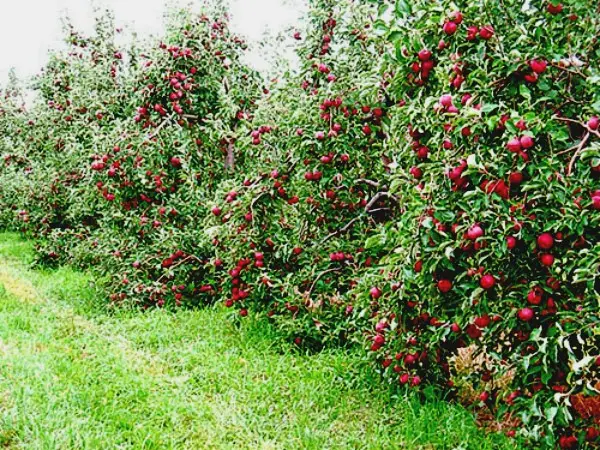
If the garden area allows, then the following ratio of apple trees is recommended:
- winter – 50%;
- autumn – 30%;
- summer – 20%.
Each of these varieties has its own characteristics:
- winter apples ripen in late autumn, are removed from the tree at incomplete maturity and safely stored in a cool place until spring, without losing their taste and vitamins;
- autumn ones ripen in late summer – early autumn, they are not stored for as long as winter ones, but they are distinguished by excellent taste and amazing apple aroma;
- summer fruits ripen early (mid-July – early August), have very juicy and sweet pulp, but their storage period is very short – 3-4 weeks.
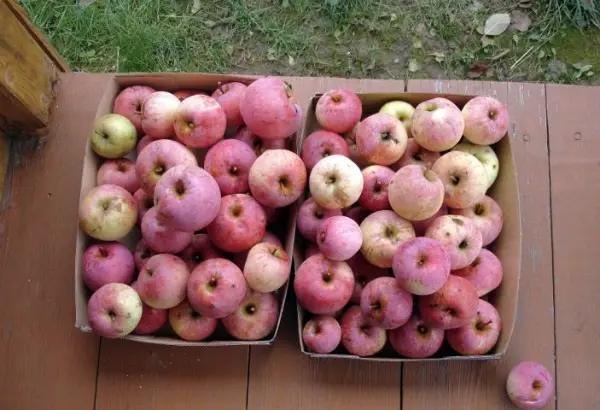
However, the ripening period is not the main criterion by which apple trees should be chosen for the Moscow region. Much more important for this region are the following characteristics:
- Frost resistance. In principle, the apple tree is able to withstand frosts of -20 ° C. But do not forget that in the regions of the Moscow region often the winter temperature drops to -30 ° C, and therefore varieties for this territory must have high cold resistance.
- resistance to various diseases. The culture is often exposed to fungal infections: scab, powdery mildew, cytosporosis. And since summer in the central zone is humid and cloudy, which is a favorable condition for the development of diseases, apple trees for the Moscow region should have high immunity to these fungi.
- Precocity (early onset of fruiting). Any gardener tends to choose varieties for his garden that give the first harvest 2–3 years after planting a seedling.
- Fruiting frequency. Most apple trees are able to produce a high yield every 2 years, but thanks to the hard work of breeders, new varieties are regularly developed that are more regular (annual) fruiting.
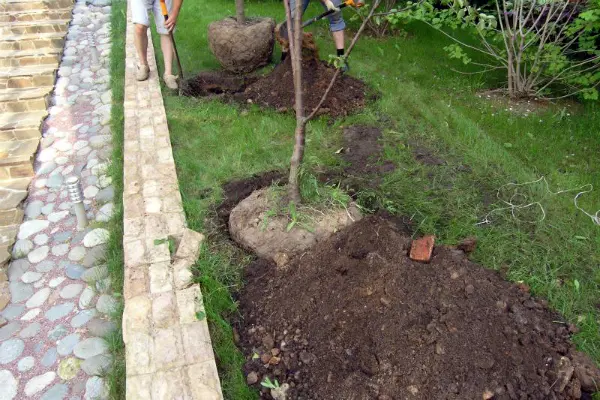
Here the question arises: how to choose a variety that has all these qualities? The answer is quite simple – you need to grow columnar apple trees. These fruit trees have become very popular in recent years, and for good reason.
Columnar hybrids are quite resistant to disease and cold. They are high-yielding (the columnar apple tree is literally hung with fruits). And what significantly distinguishes them from standard trees is their high decorativeness and compactness.
Columnar apple trees are miniature standard trees 2–2,5 meters high with a very compact (up to 0,5 m) crown. They do not have side branches, and the fruits are densely located on the main trunk. All columnar types of culture are fast-growing – their fruiting begins at 2–4 years of age, however, they give high yields only for the first 10–15 years, and then their yield drops sharply.

Columnar apple trees, like ordinary ones, are very diverse. Conventionally, they can be combined into two main types: dwarf and semi-dwarf. The former are ideal for creating a garden in a small area, since they can be planted at a distance of 1,5 m. As already mentioned, such columnar trees are highly productive: one 2-meter columnar apple tree can bear 6–12 kg of rather large fruits .
It is not easy to buy good seedlings of such apple trees. To buy, you should choose a special nursery with a good reputation, since only a nursery is able to provide real columnar seedlings and give the necessary recommendations for their cultivation.

summer apple trees
Almost all summer varieties grow well in the Moscow region. However, the most popular are the following:
- Grushovka Moscow. A very old and well-known variety of local selection. The fruits are medium in size, in technical ripeness they have a yellow skin color with a slight blush, the flesh is dense, sweet and sour in taste, very aromatic. Differs in high frost resistance.
- Nectar. This is a columnar tree, pleasing with its fragrant, yellow fruits already at the end of July. It belongs to the semi-dwarf ones – its height reaches 2 m. The fruits are large (200 g), the pulp is very juicy, granular, sweet, with a characteristic honey flavor and aroma. The variety is resistant to cold and diseases, in particular to scab.
- Lungwort. A very high yielding variety that ripens in late August. As the name suggests, the fruits are very sweet, with a honey flavor. The peel is greenish-yellow, with a bright blush covering most of the fruit. The variety is resistant to cold, scab, powdery mildew, and other diseases, but apples are not stored for a long time, a maximum of 3-4 weeks.
- Wonderful. The apple tree is distinguished by its compactness and short stature. The fruits are large (up to 200 g), warm by mid-August, the peel is bright yellow, the pulp is sweet and sour. The tree is frost-resistant, has immunity to a number of diseases, including scab, but is often affected by aphids.
- Candy apple. This variety is considered the best in taste. Its fruits are really sweet, like candy, ripen in August, but if not removed in time, they quickly crumble. Trees tolerate frost well, but are often affected by fungal diseases.

Autumn varieties
Choosing autumn apples for your garden, few gardeners will ignore the well-known Antonovka. This is not even a variety, but a variety type, which includes more than 15 varieties: Antonovka ordinary, red-sided, golden, one and a half pounds and many others. Apples of this variety are distinguished by dense sweet and sour pulp with a very delicate apple aroma, and also, sometimes by an impressive fruit size – from 200 to 600 g.
No less popular is the variety of autumn striped apples or Shtreifling. The fruits are of medium size (120-160 g), yellowish color with red stripes, characteristic of the name. The pulp is sweetish-sour, exuding a delicate aroma. The variety is quite winter-hardy, lies for a long time, and is well transported.
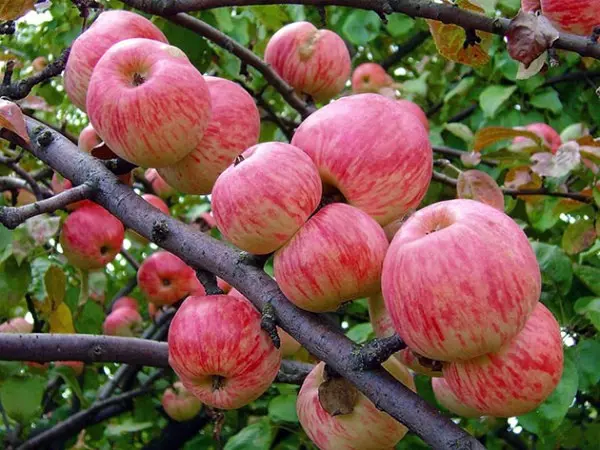
Variety Zhigulevsky is very high-yielding, with large (200–350 g) fruits of a bright red color. Harvest occurs at the end of September, but apples are stored until January.
Vasyugan is a very fast-growing columnar apple tree. Begins to bear fruit in the first year of life if planted in autumn. Medium-sized apples (150-220 g), yellow skin color, with a bright blush. The pulp is dense, crispy, quite juicy, sweet and sour taste. This columnar apple tree easily tolerates frosts of -40 ° C, is highly resistant to many diseases, including scab, and is well transported.
Video “Apple tree Antonovka in the suburbs”
Watch a short video about the Antonovka apple tree and its cultivation in the Moscow region.
Winter varieties
When breeding winter varieties, two main goals are pursued: for apples to be stored for a long time and at the same time have a good taste throughout the entire storage period. The following winter apple trees have such qualities:
- Star. A hybrid of domestic selection, bred specifically for this region. The fruits are medium-sized (100–130 g), almost completely covered with a bright blush. Apple trees easily tolerate any frost and have high immunity to diseases.
- Moscow winter. A very common winter-hardy variety. Medium-sized apples, greenish-yellow, with a slight blush in color. The pulp is very dense and juicy, the taste is sweet and sour. The variety is resistant to diseases, rarely exposed to pests.
- Pepin Saffron. A very famous variety, bred by Michurin himself. Medium-sized fruits of yellow color with a dark blush have an exceptional wine-sweet taste and characteristic aroma. Stored for a long time, almost until the next harvest.
- Moscow necklace. Columnar apple tree of very late maturation. Apples are large (170–200 g), spherical in shape, the peel is yellowish, completely covered with an intense blush, the flesh is dense, but juicy, sweet and sour. This columnar apple tree is loved by all gardeners for its exceptional yield and frost resistance. Due to the high demand, such a seedling is difficult to buy even in a nursery.
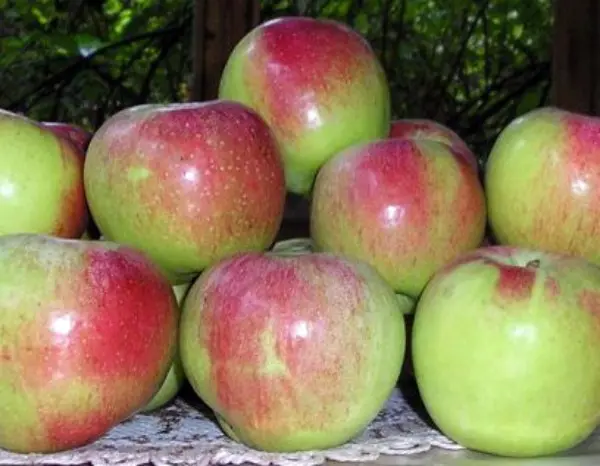
Apple planting technology
Whatever apple trees you choose, ordinary or columnar, there are almost the same planting rules for all varieties. It is very important to plant a crop in a technologically correct way, since not only its development, but also its yield depends on it.
It is known that young seedlings can be planted both in autumn and in spring. However, autumn planting is preferable, especially when it comes to winter apples. Summer varieties take root well in spring, but in this case the tree will have to be watered all summer so that it does not die from the heat.
The landing itself is carried out as follows. The landing pit is prepared in advance – about a month before disembarkation. The depth of the pit should be 60–80 cm, depending on the size of the seedling, and the depth should be at least 80 cm. If the apple tree is columnar, then the width of the pit can be wider, since these varieties, despite the compactness of the crown, have quite developed roots. Fertilizers (compost, humus) are placed at the bottom of the pit, if the soil is not very loose, then first a drainage layer must be laid on the bottom.
If the seedlings were provided to you by a nursery, then it is advisable to put them in water for a couple of days before planting, since in the nursery the roots are treated with special solutions. The tree is set vertically in a hole, the roots are leveled, and covered with earth. The soil around the tree is compacted, forming a small mound, around which a circular shallow hole is made for irrigation. Weak or very small trees are tied to stakes, which are then removed as the seedling takes root. Young apple trees are watered immediately after planting at the rate of 2-3 buckets under 1 tree. In the future, watering is carried out only in extreme heat and drought.
If the trees are planted in autumn, then care must be taken to protect the trunks from rodents. To do this, the trees from the roots to the lower branches are wrapped with any covering material or a bait is placed nearby to distract pests.
Video “Columnar apple trees”
This video will help you understand what columnar apple trees are, what are their advantages and features, what varieties exist.
Author: Svetlana Galitsina
Loading…









